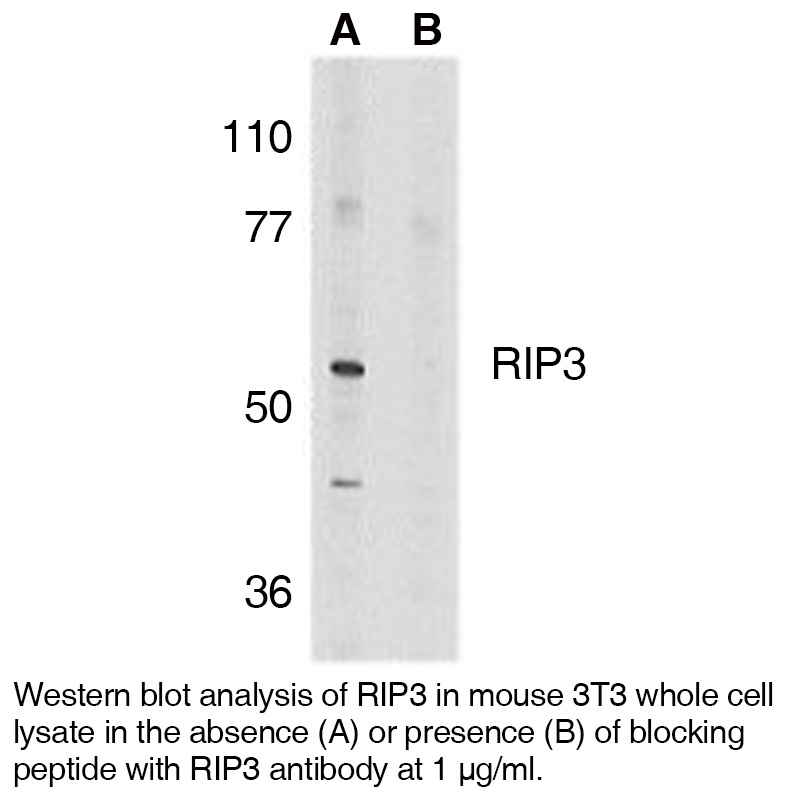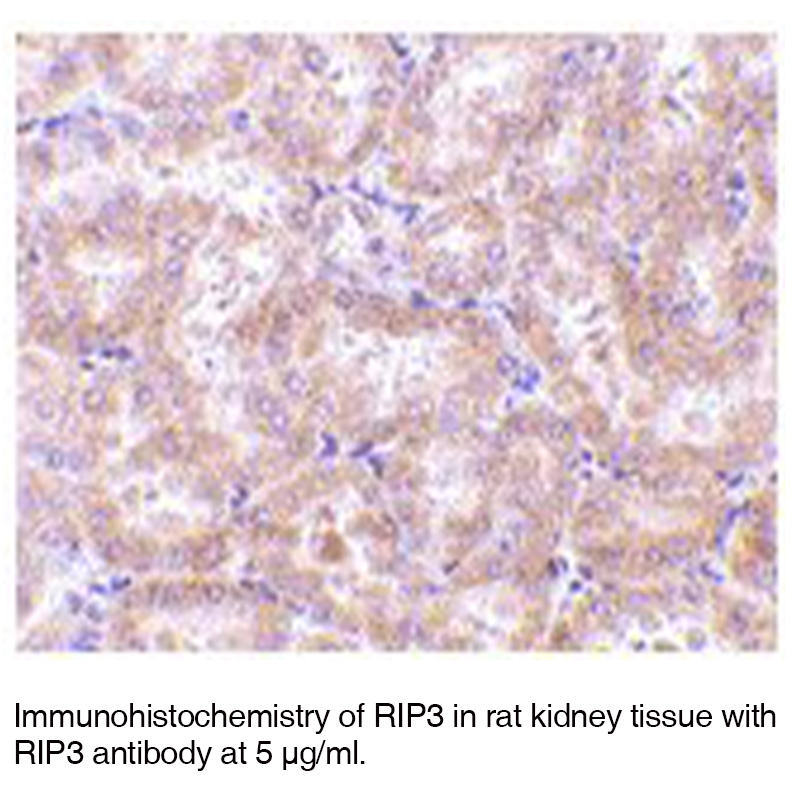Anti-Mouse Receptor Interacting Protein 3 (RIP3)
Data
- -
- -
Antibody DetailsProduct DetailsReactive Species Mouse Host Species Rabbit Immunogen PN:R1008 Product Concentration 0.5 mg/ml Formulation This polyclonal antibody is formulated in phosphate buffered saline (PBS) pH 7.4 containing 0.02% sodium azide as a preservative. Storage and Handling This polyclonal antibody is stable for at least one week when stored at 2-8°C. For long term storage, aliquot in working volumes without diluting and store at –20°C in a manual defrost freezer. Avoid Repeated Freeze Thaw Cycles. Country of Origin USA Shipping Next Day Ambient RRIDAB_2831661 Each investigator should determine their own optimal working dilution for specific applications. See directions on lot specific datasheets, as information may periodically change. DescriptionDescriptionSpecificity Rabbit Anti-Mouse Receptor Interacting Protein 3 (RIP3) recognizes Mouse and Rat RIP3. This polyclonal antibody was purified using affinity chromatography. Background Certain serine/threonine protein kinases, such as ASK1, RIP, DAP, and ZIP kinases, are mediators of apoptosis. Receptor interacting proteins including RIP and RIP2/RICK mediate apoptosis induced by TNFR1 and Fas, two prototype members in the death receptor family. A novel member in the RIP kinase family was recently identified and designated RIP3.1-3 RIP3 contains N-terminal kinase domain but, unlike RIP or RIP2, lacks the C-terminal death or CARD domain. RIP3 binds to RIP and TNFR1, mediates TNFR1 induced apoptosis, and attenuates RIP and TNFR1 induced NF-kB activation. Overexpression of RIP3 induces apoptosis and NF-κB activation. The messenger RNA of RIP3 is expressed in a subset of adult tissues.2,3 PubMed References & Citations1. Yu, PW. et al. (1999) Curr. Biol. 9(10):539 2. Sun, X. et al. (1999) J. Biol. Chem. 274(24):16871 3. Pazdernik, NJ. et al. (1999) Mol. Cell Bio. 19(10):6500 Technical ProtocolsCertificate of Analysis |
Related Products
- -
- -
Prod No. | Description |
|---|---|
R1001 | |
R1008 |




